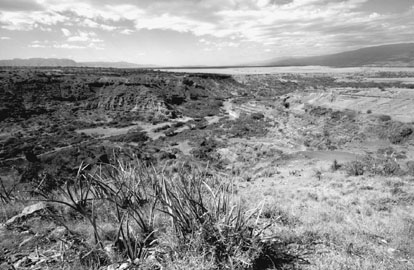

 | Page 968 |  |
became first director of the Institute of History, Philology, and Philosophy in Novosibirsk. During the 1960s and 1970s, Okladnikov edited and authored the History of Siberia, for which he received the USSR’s State Award in 1973. He returned to work in Soviet Mongolia and put forward a general scheme of the evolution of the Paleolithic period there. He also studied petroglyphs, discovering and examining thousands of them and publishing his interpretations. He supervised over forty doctoral dissertations, and his students now work in positions in archaeology across the whole of russia. He was awarded the Gold Medal of the Hero of Labor in 1978, on his seventieth birthday.
References
For references, see Encyclopedia of Archaeology: The Great Archaeologists, Vol. 2, ed. Tim Murray (Santa Barbara, CA: ABC-CLIO, 1999), pp. 579–580.
Located near the Serengeti Plain in northern Tanzania, Olduvai Gorge is an erosional feature connected to the Rift Valley of Africa. Discovered as a fossil locality by the Germans before World War I (notably by Wilhelm Kattwinkel [1866–1935] and Hans Reck [1886–1937]), Olduvai Gorge was taken up as a research area by louis b. leakey when Reck revisted the area with him between 1931 and 1932. Leakey and his wife, mary leakey, conducted regular fieldwork in the gorge over the next thirty years, but it was not until 1959 (with Mary Leakey’s discovery of the cranium of what Louis Leakey named Zinjanthropus boisei) that the spectacular discoveries which are synonymous with the place were made.

The landscape of the Olduvai Gorge
(Gallo Images/Corbis)
In many ways, Olduvai Gorge is an ideal fossil locality with a geological history spanning the last 2 million years and fossil-bearing sediments sandwiched by datable volcanic tuffs that have so far yielded australopithecines and early forms of the genus Homo (Homo habilis and Homo erectus). Notwithstanding its importance as a fossil locality, the sediments at Olduvai also contain a vitally important cross-sequence of early hominid stone technology. It is the type site of the Oldawan industry, the oldest yet discovered,
 |  |